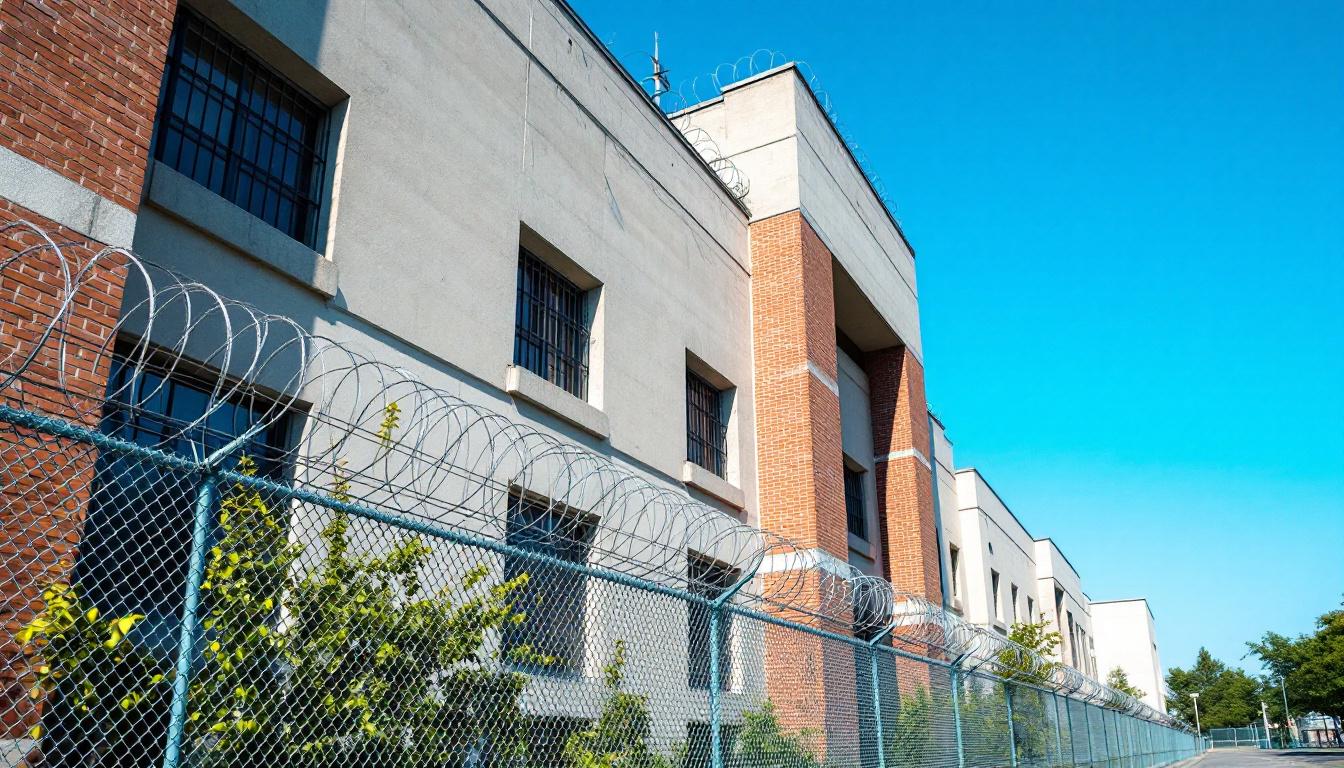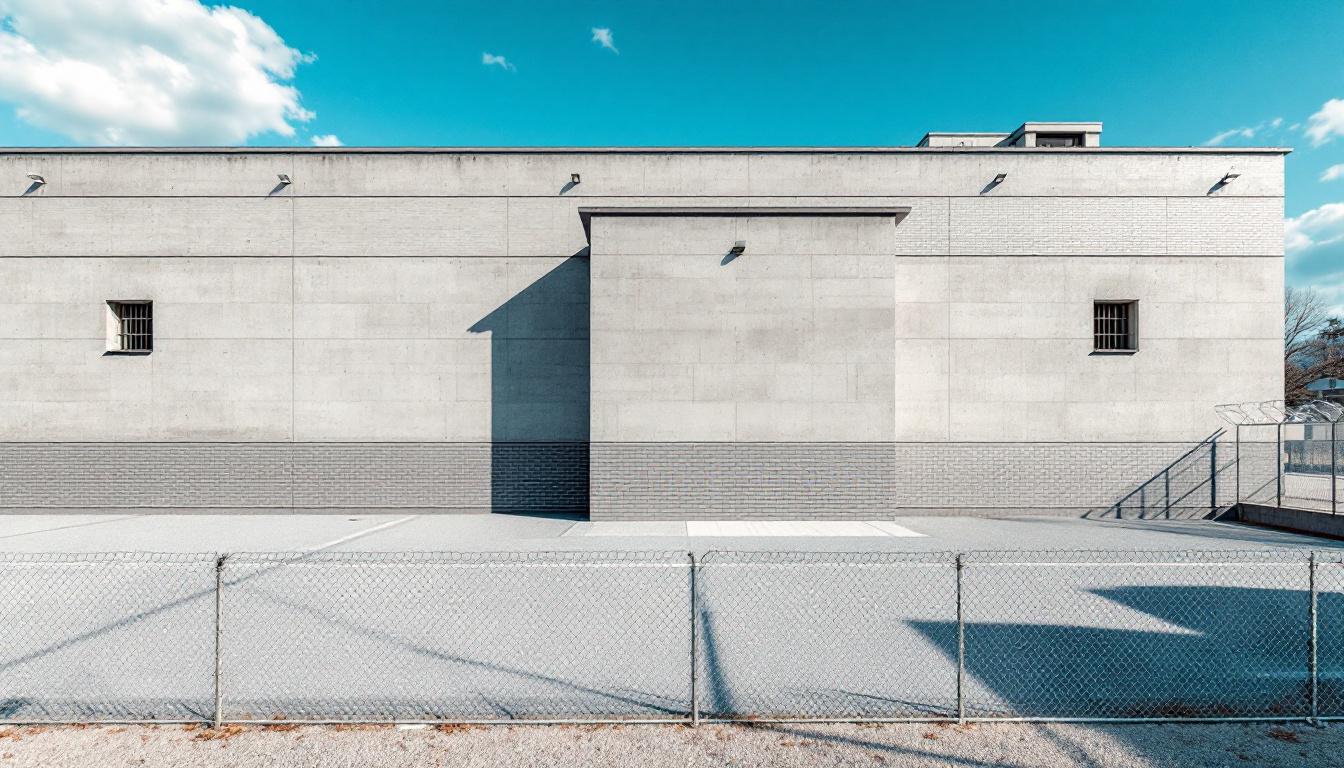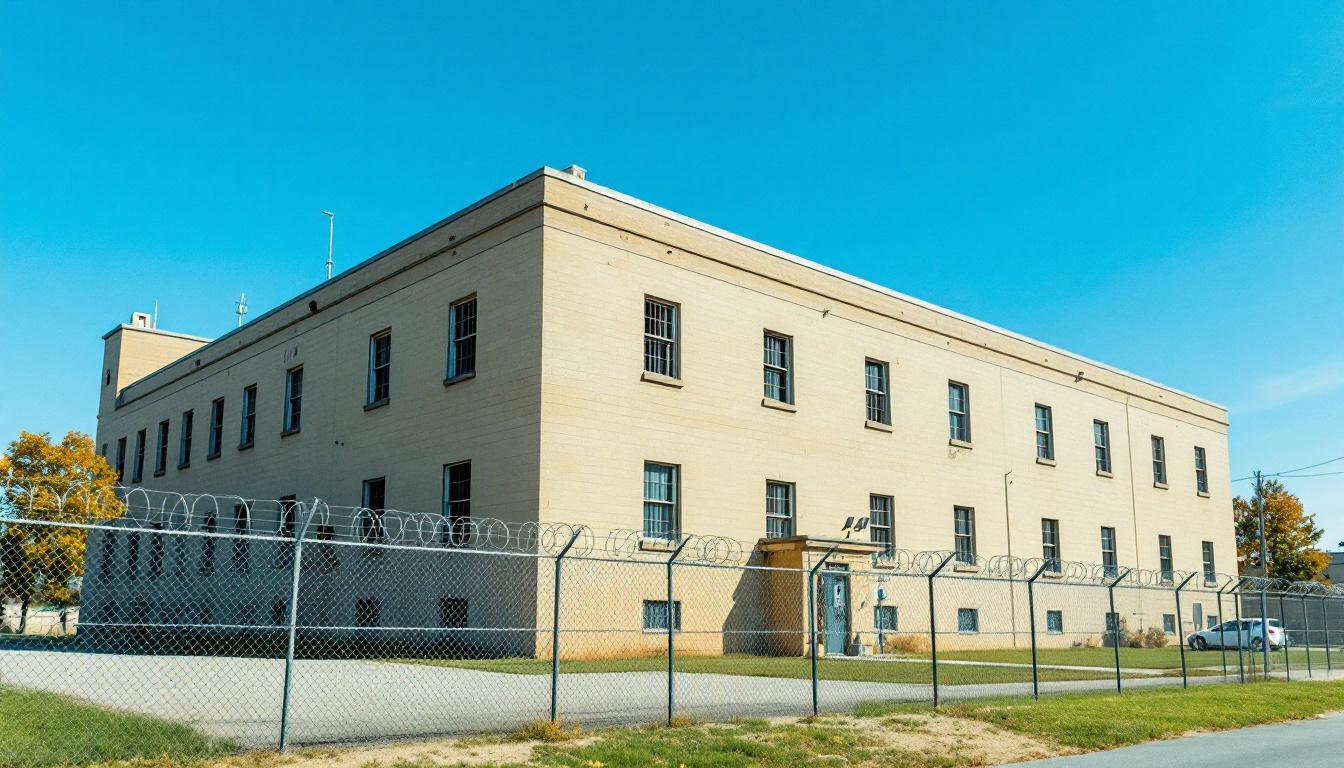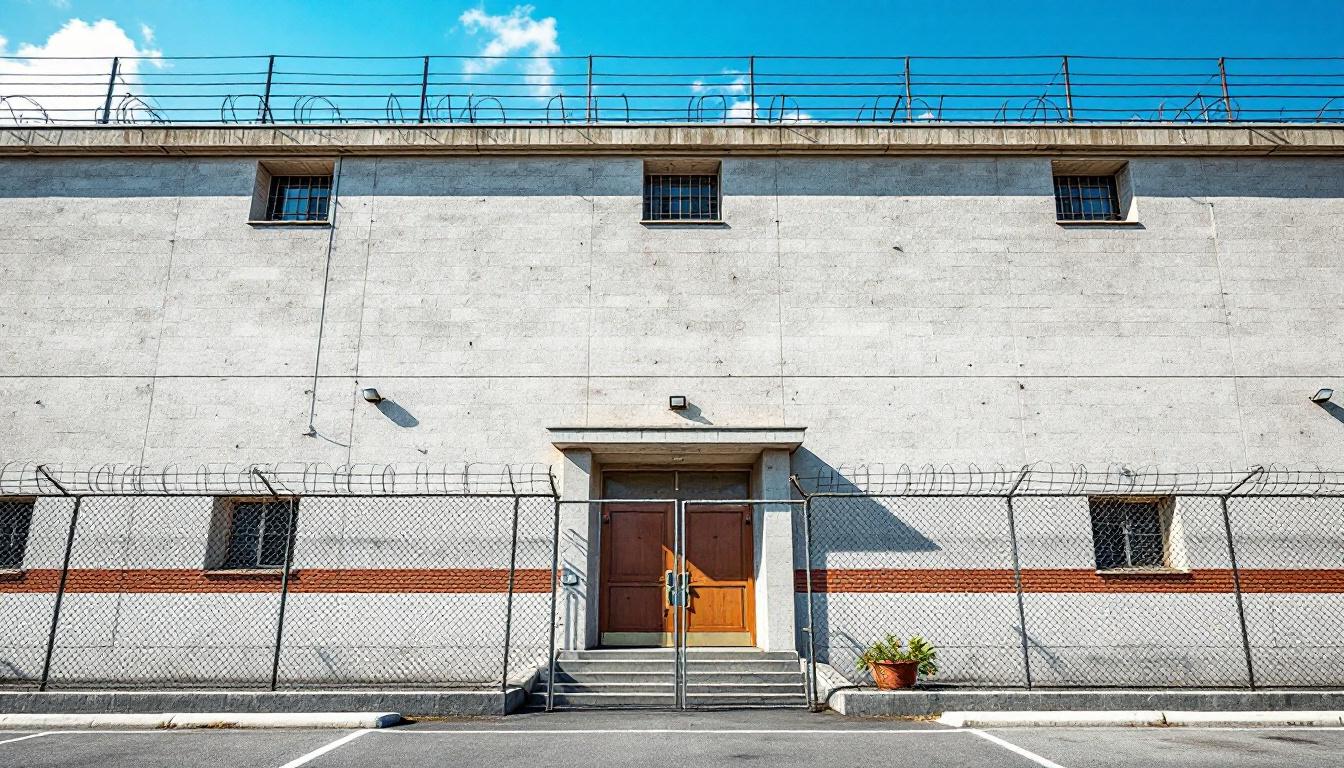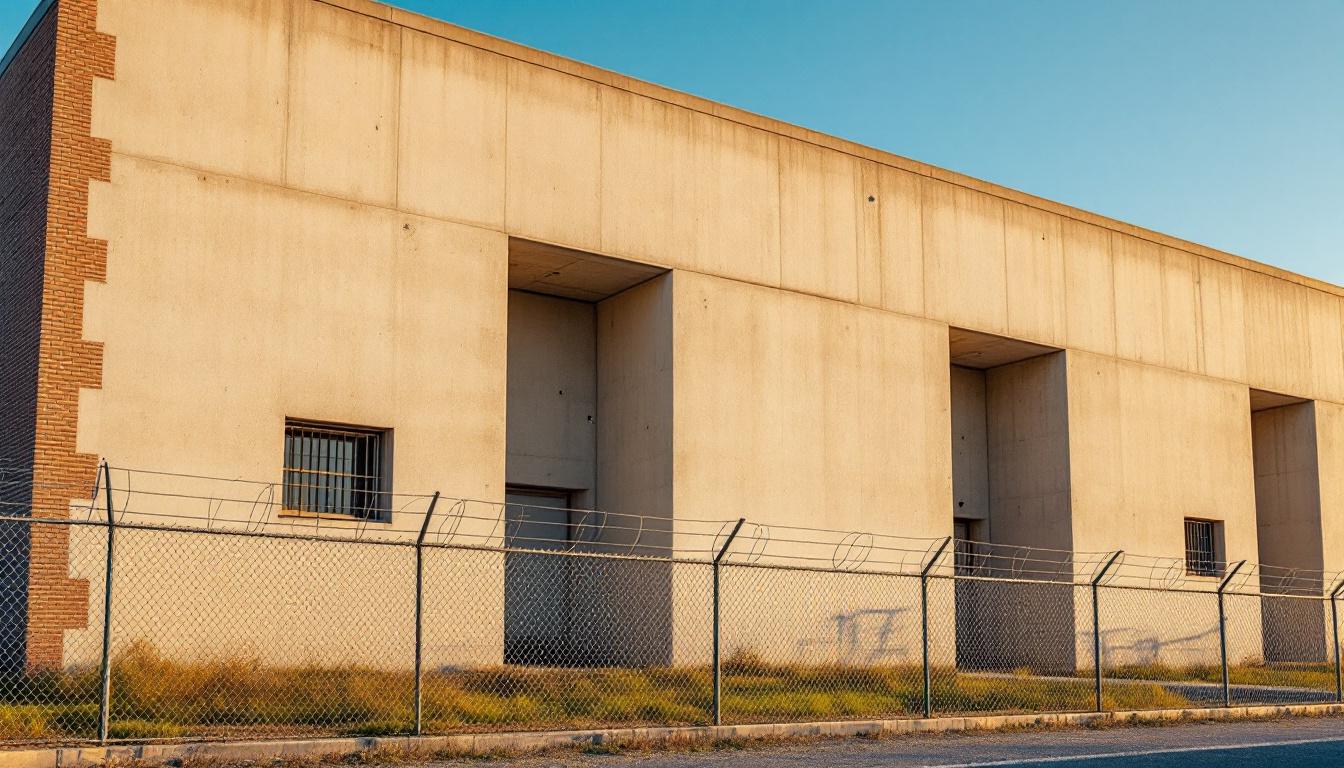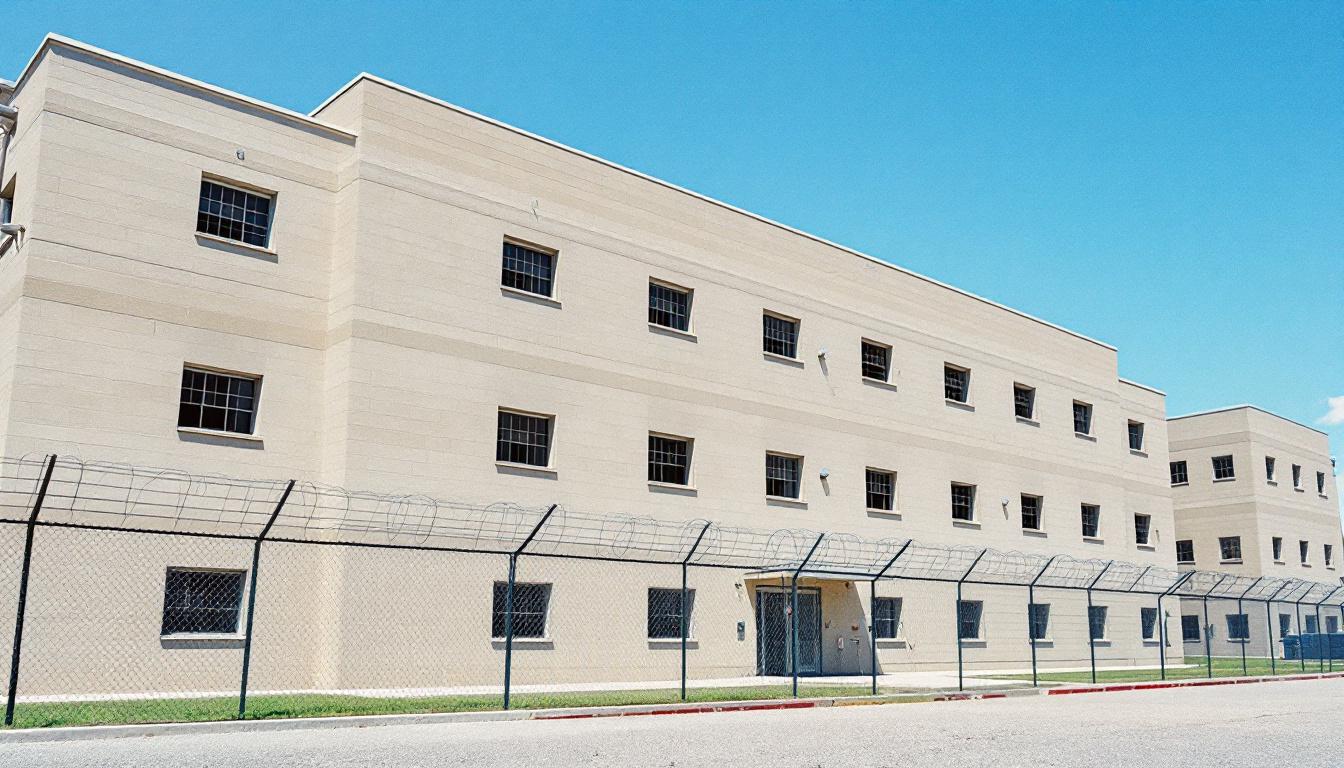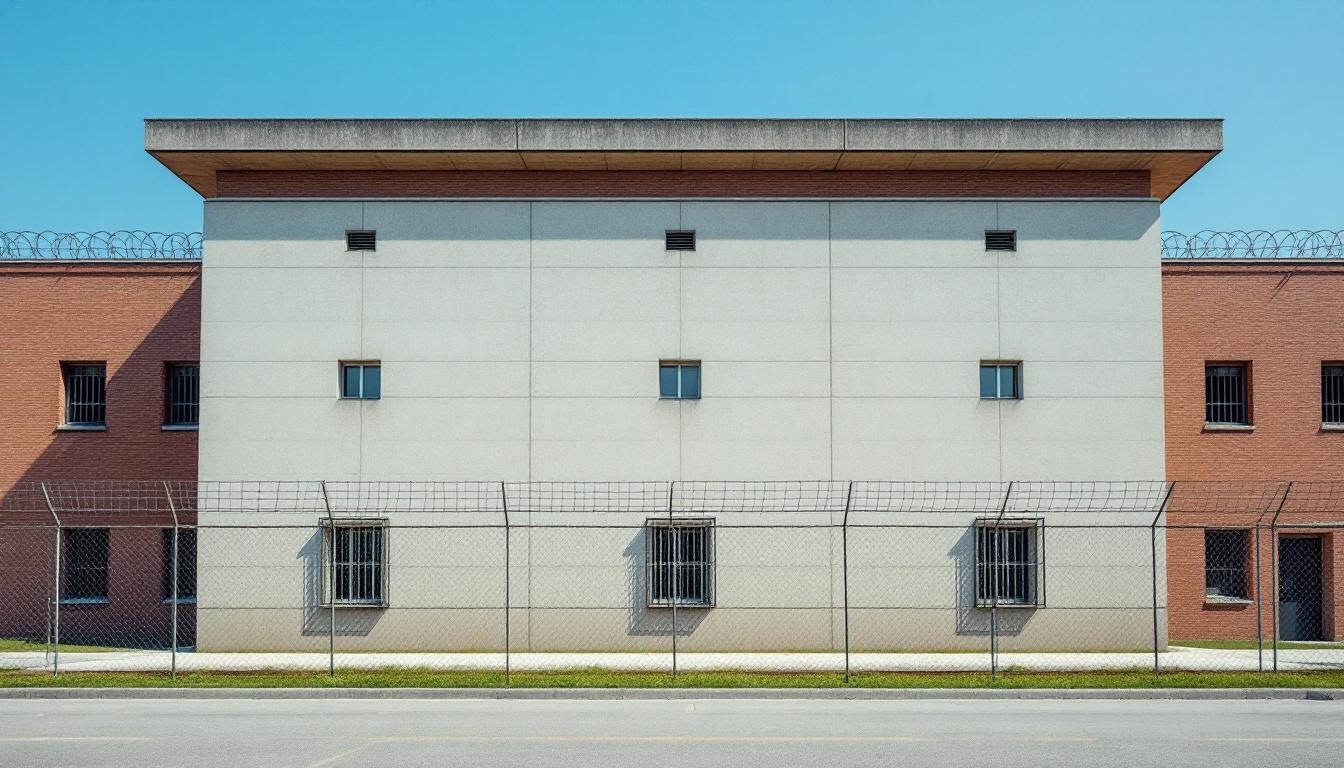
Quick Navigation
How to contact an inmate at Alfred D. Hughes Unit
This comprehensive guide will walk you through how to connect with an inmate at Alfred D. Hughes Unit. Follow the steps below to find an inmate and send letters and photos:
- Search for the inmate using our search tool below
- Create your account or log in to Penmate
- Write your message (up to 6,000 characters)
- Send instantly - inmates receive printed copies daily
Find an Inmate
Search for an inmate to start communicating today
Tip: You can search by first name, last name, or inmate ID number
To contact a person at Alfred D. Hughes Unit start by searching for the person on the official facility website. Perform a search by following these steps:
- Step 1: Enter their first name and last name into the search form and click "Search"
- Step 2: Locate their inmate record
- Step 3: Write down their Inmate ID and any housing information provided
Important! Be sure to enter the person's full name. Nicknames should not be used.
How to Send Messages to Inmates

You can use your phone or computer to send emails, letters, and photos to an inmate. Messages are sent electronically to inmate tablets or kiosks at the facility. If you would like to send a message, start by searching for an inmate at Alfred D. Hughes Unit.
Sending Photos and Postcards

A great way to send love and support to a loved one at Alfred D. Hughes Unit is to send photos and postcards. It only takes a few minutes to send photos from your phone and it makes a huge difference. You can also mail postcards with words of support and inspiration, or design your own postcard for special moments like birthdays and holidays.
Important! Be sure not to send any explicit photos or they may not be approved by the facility. You can also use a photo printing app like Penmate to make sure your photos are printed at the correct size (4x6 or 3x5) and are mailed according to the rules and regulations of Alfred D. Hughes Unit.
Frequently asked questions about Alfred D. Hughes Unit
-
How long does it take to deliver a message?
If you're sending an email message your letter is usually delivered within 24-48 hours. For messages sent via mail you should expect delivery within 3-7 days. All messages will need be approved by Alfred D. Hughes Unit.
-
How much does it cost to send a message to Alfred D. Hughes Unit?
You can send a message free using your phone or mail a message via USPS for the price of a $0.60 stamp and envelope. You can also purchase credits or e-stamps from services starting at $1.99.
-
What services can I use to contact an inmate at Alfred D. Hughes Unit?
Penmate
You can use Penmate to send letters and photos to an inmate from your phone. It's an easy way to stay in touch during your loved one's incarceration. Use the inmate locator to find an inmate's location and contact information, then you can send messages within a few minutes.
Securus messaging
Securus may be another option for communicating with an inmate at Alfred D. Hughes Unit. You can create a friends and family account and purchase credits to send messages. All messages will be reviewed and must be approved by the facility.
JPay
Some county jails and state prisons may support sending messages with JPay. You must register an account with the system, find your loved one, and purchase stamps to send messages. For some locations you can also attach photos.
Smart Jail Mail
You may also check if Smart Jail Mail is available at Alfred D. Hughes Unit. Smart Jail Mail is operated by Smart Communications and has contracted with some state and county jails. After purchasing credits, your messages and photos are sent to the facility, printed out, and then handed out to your loved one.
-
What is the mailing address of Alfred D. Hughes Unit?
Mailing address:
Alfred D. Hughes Unit
3201 FM929
Gatesville, TX 76528
Phone: (254) 865-6663Business hours:
- Monday: Closed
- Tuesday: Closed
- Wednesday: Closed
- Thursday: Closed
- Friday: Closed
- Saturday: 7:00 AM – 5:00 PM
- Sunday: 7:00 AM – 5:00 PM
-
What are the visiting hours at Alfred D. Hughes Unit?
Visiting hours at Alfred D. Hughes Unit vary by housing unit and security level. Generally, visits are scheduled on weekends and holidays, with some facilities offering weekday visits. Contact the facility directly at (254) 865-6663 or check their website for the current visiting schedule. Visits typically last 30-60 minutes and must be scheduled in advance.
-
What items are prohibited when sending mail to Alfred D. Hughes Unit?
Prohibited items typically include: cash, personal checks, stamps, stickers, glitter, glue, tape, staples, paperclips, polaroid photos, musical or blank greeting cards, hardcover books, magazines with staples, and any items containing metal or electronics. Only send letters on plain white paper with blue or black ink. Photos must be printed on regular photo paper (no Polaroids). Always check with Alfred D. Hughes Unit for their specific mail policies.
-
How do I send money to an inmate at Alfred D. Hughes Unit?
You can send money to an inmate at Alfred D. Hughes Unit through several methods: 1) Online using JPay, Access Corrections, or the facility's approved vendor, 2) Money orders mailed directly to the facility with the inmate's name and ID number, 3) Kiosks located in the facility lobby, or 4) Over the phone using a credit or debit card. Fees vary by method, typically ranging from $2.95 to $11.95 per transaction.
-
Can I schedule a video visit with an inmate at Alfred D. Hughes Unit?
Many facilities now offer video visitation as an alternative to in-person visits. At Alfred D. Hughes Unit, video visits may be available through services like Penmate, Securus Video Connect, GTL, or ICSolutions. Video visits typically cost $10-20 for 20-30 minutes and must be scheduled in advance. You'll need a computer or smartphone with a camera and reliable internet connection. Contact the facility for their specific video visitation policies and approved vendors.
-
What identification do I need to visit an inmate at Alfred D. Hughes Unit?
All visitors must present valid government-issued photo identification such as a driver's license, state ID, passport, or military ID. Minors must be accompanied by a parent or legal guardian who can provide the minor's birth certificate. Some facilities require visitors to be on the inmate's approved visitation list, which may require a background check. Contact Alfred D. Hughes Unit for specific ID requirements and visitor approval procedures.
-
How can I find out an inmate's release date?
To find an inmate's release date at Alfred D. Hughes Unit, you can: 1) Use the online inmate search tool if available, 2) Call the facility's records department, 3) Contact the inmate's case manager or counselor, or 4) Have the inmate provide this information during a call or visit. For privacy reasons, some facilities only release this information to immediate family members.
Facility Overview
Official Website

About Alfred D. Hughes Unit
Correctional facilities serve as essential components within Texas's comprehensive approach to justice and public safety, representing institutions where accountability meets opportunity for meaningful change. ALFRED HUGHES operates within this framework in Gatesville, TX, contributing to the state's broader mission of maintaining secure environments while fostering pathways toward successful community reintegration.
Located in central Texas, this TX correctional facility functions within a region known for its commitment to balancing security with rehabilitation-focused programming. The facility typically provides the population services that address multiple dimensions of incarceration, including educational opportunities, vocational training programs, and behavioral intervention initiatives designed to support long-term positive outcomes. These comprehensive approaches generally emphasize skill development and personal accountability, recognizing that effective correctional practices extend beyond containment to include preparation for eventual community return.
The institution's role within Gatesville's correctional landscape reflects Texas's evolving understanding that sustainable public safety emerges through evidence-based practices that address underlying factors contributing to criminal behavior. Programs may include substance abuse treatment, mental health services, and work-readiness training, all structured to support both immediate facility management and longer-term recidivism reduction goals. Through maintaining secure operations while simultaneously investing in rehabilitation-oriented services, the facility contributes to a correctional approach that serves both incarcerated individuals and the broader community's safety interests.
Programs & Services
Comprehensive support reaches the population through carefully structured programs designed to address multiple aspects of personal development and successful community reintegration. The facility's approach emphasizes building practical skills while addressing underlying challenges that may have contributed to incarceration. These programs typically operate with the understanding that effective rehabilitation requires both immediate support and long-term preparation for life after release.
Educational and vocational training programs form a cornerstone of the facility's offerings, providing the population with marketable skills for future employment. Vocational training may supply hands-on experience in various trades, while electrical work programs often include both theoretical knowledge and practical application. These educational opportunities typically focus on industries with strong job markets, helping participants develop competencies that translate directly to employment prospects upon release.
Support services and therapeutic interventions address the complex needs many individuals face during incarceration. Work programs often provide structure and responsibility while building employment readiness skills. Also available are faith-based initiatives that may offer spiritual guidance and community connection for those who choose to participate. Dual diagnosis treatment typically addresses co-occurring mental health and substance abuse issues through specialized counseling approaches. Job placement assistance programs often include resume writing, interview preparation, and connections to potential employers. Domestic violence programs may supply education and counseling for those whose offenses or personal histories involve relationship violence, focusing on healthy communication patterns and conflict resolution skills.
Daily Life & Visitation

Systematic organization shapes every aspect of life within the facility, creating predictable routines that help the population navigate their daily experiences. The structured environment currently operates on established schedules that cover meals, work assignments, and programming activities. Count times occur regularly throughout each day, and the population continues to follow institutional procedures that maintain order and security across all housing areas.
Housing units typically accommodate multiple individuals in dormitory-style settings or smaller rooms, depending on classification levels and available space. The population generally receives three meals daily in designated dining areas, with specific times allocated for each housing unit to maintain orderly operations. Personal property allowances usually include basic necessities and approved items that can be purchased through the commissary system. Also, medical services and educational opportunities may be available based on individual needs and facility resources.
Work assignments often supply structure to daily routines, with the population participating in various facility maintenance tasks, kitchen duties, or other operational roles. Recreation periods typically include outdoor time when weather permits, along with access to common areas for television viewing or reading. However, visitation schedules and telephone privileges operate according to established policies that balance family connections with security requirements. Programming activities may include educational classes, vocational training, or counseling sessions that continue to provide meaningful engagement throughout the week.
Ready to Connect?
Start communicating with your loved one today
Search for an Inmate


